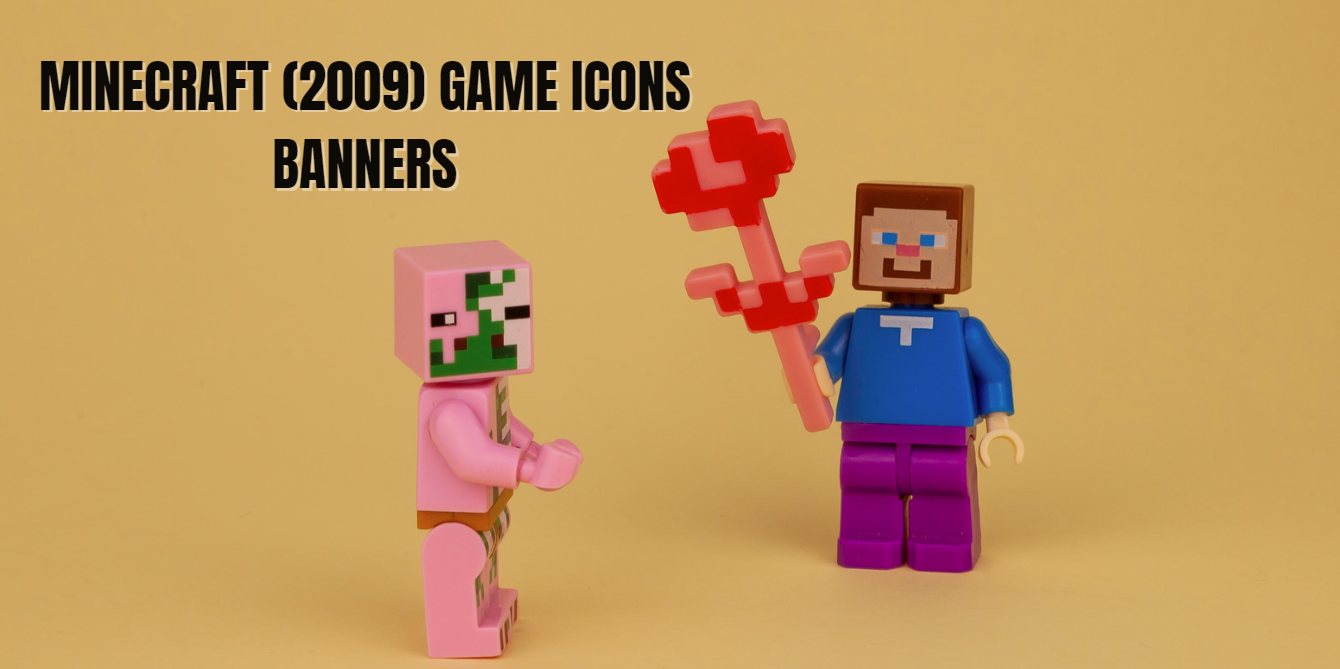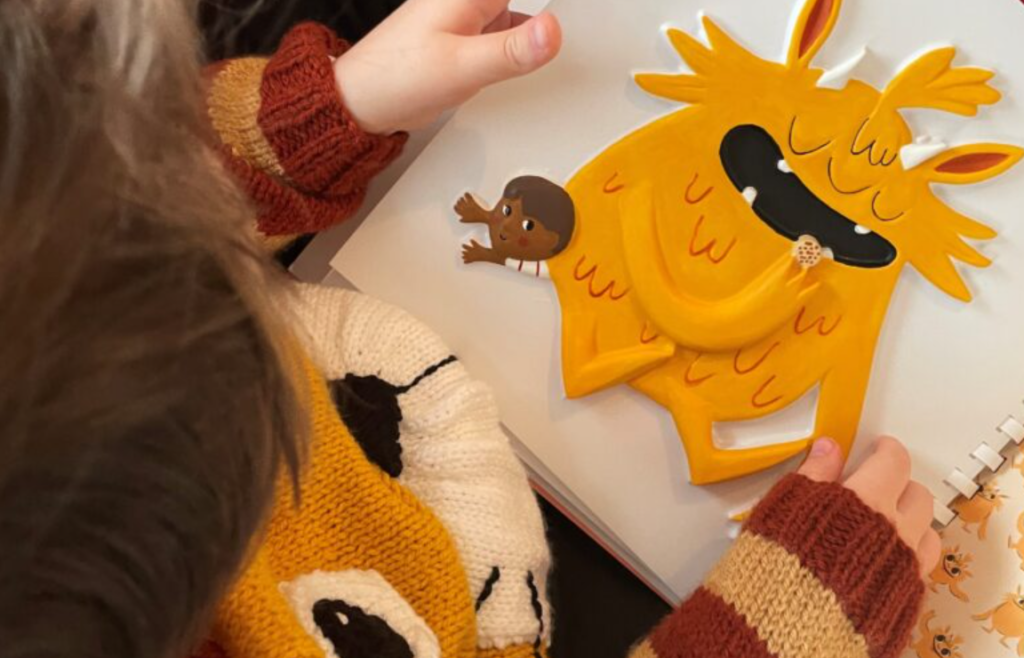Minecraft, a sandbox game released in 2009 by Mojang Studios, has grown into a cultural phenomenon, captivating millions worldwide with its simple yet profound gameplay mechanics. A cornerstone of this experience is its rich visual identity, particularly the iconic in-game elements like banners and icons. From the Creeper face to the Ender Dragon egg, these icons symbolize core aspects of the game’s lore, challenges, and creative possibilities. This article delves into the history, design, and significance of Minecraft (2009) game icons banners, while offering fresh insights and interpretations that go beyond existing sources.
Contents
- 1 Introduction to Minecraft’s Visual Identity
- 2 Iconography in Minecraft: More Than Just Symbols
- 3 Banners: Customization and Identity in Minecraft
- 4 The Importance of Icons and Banners in Minecraft’s Gameplay
- 5 How to Create Unique Minecraft Banners and Icons
- 6 Minecraft (2009) Game Icons Banners: A Cultural Phenomenon
- 7 The Future of Minecraft’s Visual Elements
- 8 FAQs About Minecraft (2009) Game Icons Banners
- 9 Conclusion
Introduction to Minecraft’s Visual Identity
From its inception, Minecraft’s distinctive blocky aesthetic and minimalistic icons have set it apart from other video games. Players are thrust into a vast, procedurally generated world where survival and creativity coexist. The game’s interface and in-world elements are punctuated by key visual symbols—Minecraft (2009) game icons banners—that serve both functional and aesthetic purposes.
Notable among these icons are the Creeper face and the Ender Dragon egg. These icons are not just graphical elements; they have become symbols representing Minecraft’s lore, challenges, and fan culture. Banners, on the other hand, are customizable, allowing players to imbue their creations with personal flair and identity. Together, these icons and banners create a visual language that enhances the gameplay experience, connecting players across the world.
Iconography in Minecraft: More Than Just Symbols
Icons in Minecraft serve more than decorative purposes. They’re central to the gameplay, each representing critical game mechanics or lore elements. Whether you’re encountering a Creeper icon or crafting a banner to represent your faction, these visual elements are imbued with deep meaning.
Evolution of Minecraft Icons
When Minecraft first launched in 2009, the game’s interface was stark and minimalist. Early icons, including rudimentary tools and blocks, reflected the raw, simplistic nature of the game. Over time, as updates like “The Adventure Update” (2011) and “The End” (2012) were introduced, the number of icons expanded to include more sophisticated designs representing new items, creatures, and mechanics.
Icon Design: The Creeper Face
The Creeper icon is perhaps the most famous symbol associated with Minecraft. Introduced as a mistake in coding (when a pig’s dimensions were altered), the Creeper has since become a menacing yet iconic figure in the game. The Creeper face icon appears on a variety of in-game items and banners, and has crossed over into pop culture, becoming synonymous with Minecraft itself.
The simplicity of the Creeper face—two square eyes and a vertical rectangle for the mouth—captures Minecraft’s core design philosophy: minimalism with maximum impact. Its unsettling, abstract appearance perfectly encapsulates the tension that the Creeper brings to the game, silently approaching players and causing explosive destruction.
The Ender Dragon Egg: A Symbol of Victory
The Ender Dragon egg is another pivotal icon in Minecraft, symbolizing the ultimate achievement for players who defeat the Ender Dragon in the End dimension. While not functional as a crafting ingredient or tool, the egg serves as a trophy. It is the visual representation of a player’s conquest over the game’s toughest challenge, making it a prized in-game possession.
In the broader Minecraft culture, the Ender Dragon egg has transcended its role as an in-game item to become a symbol of mastery and perseverance. This egg is often featured on banners and icons created by players to signify accomplishment or to decorate their bases with a mark of their achievements.
Banners: Customization and Identity in Minecraft
Crafting Banners in Minecraft
Banners in Minecraft were introduced in version 1.8 and have since become an essential tool for personalization within the game. Players can create banners using wool and a stick, then dye them in various colors. Each banner serves as a canvas for endless customization, allowing players to create intricate patterns and symbols.
Minecraft banners are commonly used to decorate player bases, identify factions in multiplayer servers, or mark territories in survival gameplay. The process of crafting a banner can become an art form, and some players spend hours perfecting their designs.
Customizing Banners: Patterns and Designs
Players can apply a wide range of patterns to banners using a loom. From simple stripes and crosses to more complex designs like Creeper faces or Ender Dragon eggs, the possibilities are virtually endless. Each banner can be dyed in up to 16 different colors, offering immense customization potential.
Some of the most famous banner designs include national flags, Minecraft-themed shields, and intricate geometric patterns. Players often display these banners in high-traffic areas like villages, trading halls, or fortresses to showcase their unique designs.
Famous Banner Designs: Flags, Shields, and Fandom
Beyond basic banner creation, Minecraft players have gone on to replicate famous flags and fandom symbols using in-game tools. For instance, you can find banners that resemble the American flag or popular culture icons such as Star Wars symbols, anime characters, or even brands. These banner creations reflect the creativity that Minecraft encourages, allowing players to bring elements of their real-world identity into the game.
The Importance of Icons and Banners in Minecraft’s Gameplay
How Icons Influence Game Mechanics
Minecraft’s icons are directly tied to in-game functionality. The Creeper face icon, for example, signals the presence of one of the game’s most dangerous mobs. Other icons, like the Ender Dragon egg, indicate a player’s achievements and help guide players through the game’s progression system. Understanding these icons and their meanings is crucial for mastering the game.
In addition, banners serve as more than just decorations. Players use banners as navigation markers, signposts, or identifiers. For instance, in large multiplayer servers, banners can distinguish between different factions or player groups. By placing them on shields, players can carry these designs into battle, adding another layer of strategy and personalization.
Banners as Tools of Organization and Aesthetics
Banners also play an essential role in organizing player spaces. Many large-scale survival worlds or multiplayer servers utilize banners to mark different sections of a base or village. This helps players maintain order in sprawling worlds while also adding a personalized touch to each area.
From an aesthetic perspective, banners transform the visual dynamics of the Minecraft world. Players use them as accents on castles, ships, and other monumental builds. By mixing patterns and colors, players create a visually engaging experience that reflects their creativity.
How to Create Unique Minecraft Banners and Icons
Tools and Techniques for Icon Design
While Minecraft offers a range of in-game tools for creating banners and icons, many players turn to third-party programs and websites for additional customization. Online tools such as BannerCraft and Pixelart allow players to create complex designs with ease. These platforms offer more flexibility than the in-game crafting table, giving players the power to create highly detailed icons and banners.
Customizing Banners with Online Tools
If you’re looking to design an elaborate Minecraft banner for your base or faction, online tools like NeedCoolShoes provide a more intuitive interface than Minecraft’s loom system. These tools allow you to mix patterns, colors, and even add custom textures that aren’t available in the base game.
Another useful online tool is the Minecraft banner generator, which allows players to preview and fine-tune their designs before implementing them in the game. These tools save players time and effort while expanding the range of what’s possible within Minecraft’s creative space.
Minecraft (2009) Game Icons Banners: A Cultural Phenomenon
Fan Creations and Community Contributions
The Minecraft community has played an essential role in elevating the game’s banners and icons to cultural status. Platforms like Reddit, YouTube, and Planet Minecraft are filled with fan-made creations that push the boundaries of what’s possible with these tools. Some players have recreated famous artworks, historical icons, or memes within the game’s banner system, contributing to a thriving creative ecosystem.
Merchandising and the Spread of Minecraft Icons
Icons like the Creeper face and Ender Dragon egg have also expanded beyond the digital space. Today, you can find these icons on a wide range of merchandise, including T-shirts, backpacks, toys, and even board games. The Minecraft (2009) game icons banners have become symbols of fandom, instantly recognizable to players and non-players alike.
The Future of Minecraft’s Visual Elements
As Minecraft continues to evolve, so too will its visual language. With updates and expansions frequently adding new blocks, mobs, and dimensions, it’s likely that we will see even more intricate and significant icons and banners in future versions of the game. Mojang Studios’ commitment to fostering creativity means that players will continue to have the freedom to shape the game’s visual identity, ensuring that Minecraft (2009) game icons banners remain a dynamic and essential aspect of the player experience.
FAQs About Minecraft (2009) Game Icons Banners
What are some of the most famous icons in Minecraft?
Some of the most iconic symbols in Minecraft include the Creeper face, the Ender Dragon egg, and the diamond pickaxe. Each represents a critical element of the game, from the dangers of Creepers to the ultimate achievement of defeating the Ender Dragon.
To craft a banner in Minecraft, you need 6 blocks of wool and 1 stick. The wool can be dyed in different colors, and patterns can be added using a loom and dyes.
Can you import custom icons into Minecraft?
Yes, with mods or texture packs, players can import custom icons and textures into Minecraft. Tools like Minecraft Banner Crafting Generator allow for the creation of complex designs.
In multiplayer servers, banners are often used to represent factions, clans, or groups. They can also serve as decorative elements or functional markers to help players navigate large builds.
How did the Creeper face icon come about?
The Creeper was created due to a coding error when the pig’s height and width were accidentally swapped. The resulting figure became the iconic Creeper, and its face is now one of the most recognized symbols in Minecraft.
Conclusion
Minecraft (2009) game icons banners are more than just visuals—they are symbols of creativity, achievement, and community. From the instantly recognizable Creeper face to the fully customizable banners, these elements define the Minecraft experience, bridging gameplay mechanics with personal expression. As players continue to push the boundaries of what’s possible with these tools, the future of Minecraft’s visual identity remains bright and full of potential.







